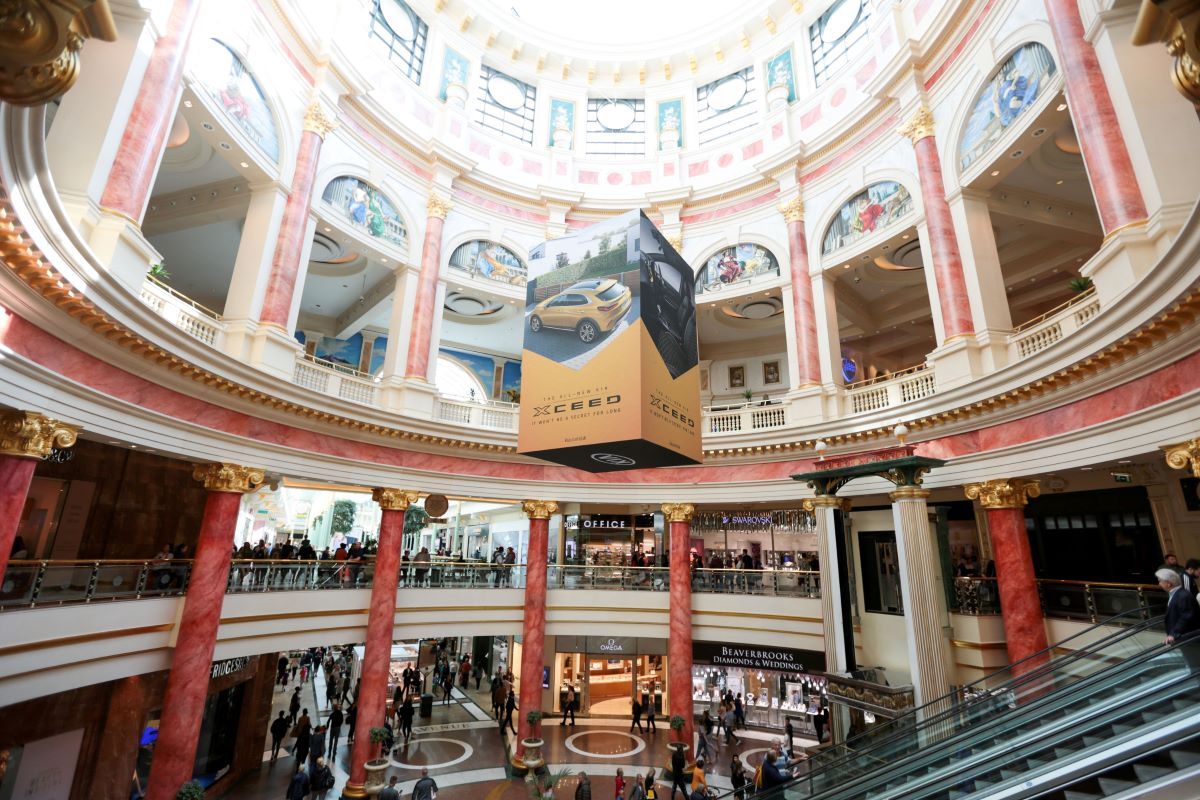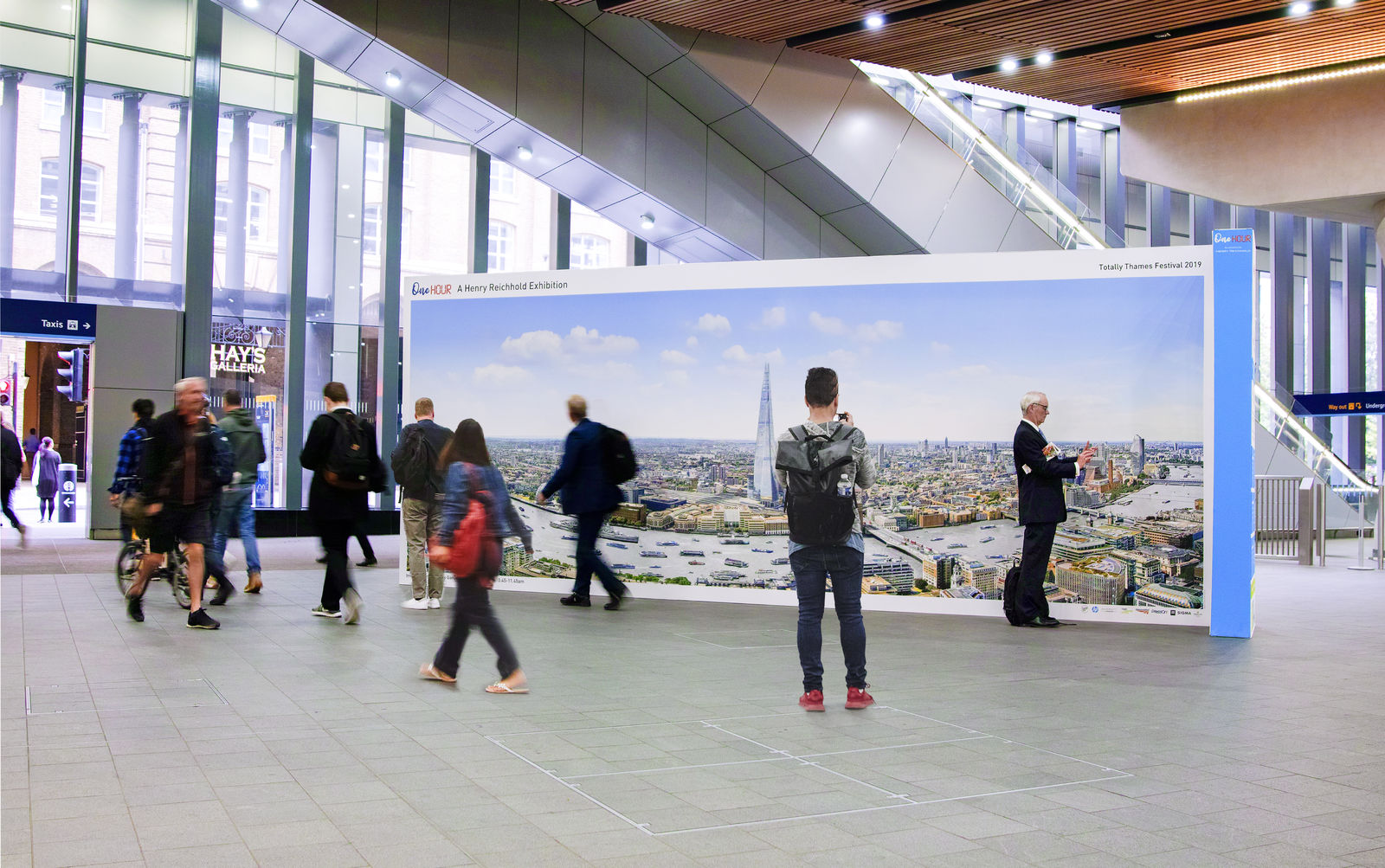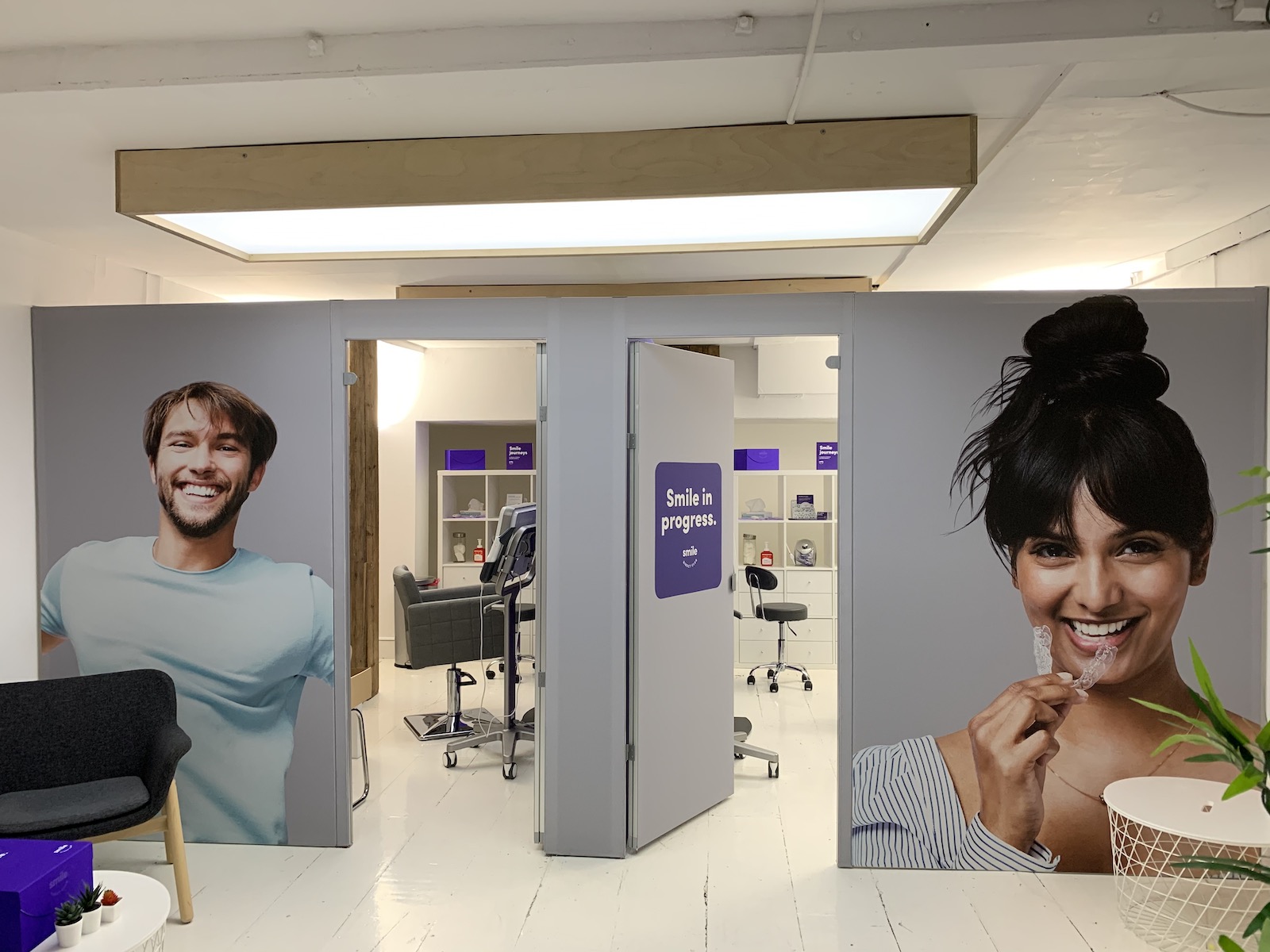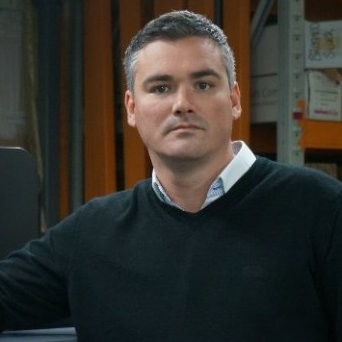There’s a long-established history of boundary-pushing branding in the UK, both in the retail sector and within interior spaces such as offices and residential homes. From pictures decorating the walls to more unusual forms of branding such as lift and floor graphics, the level of personalisation which a brand can bring to a space is as limitless as their creativity.
As we move into an era in which every industry is increasingly accountable for their environmental impact, what are the implications for large-format printing? For brands intending to continue to think big while nevertheless reducing their environmental impact, tension fabric frames offer a wide range of exciting, high-impact design possibilities…
Tension fabric frames: the basics
Tension fabric frames are a unique form of printed media, composed of a printed fabric banner suspended within a metal frame which can be configured into (almost) any shape. Cubes, cuboids and pyramids are popular choices, and unprecedented bespoke designs can be explored easily.
This structure gives the finished installation its three-dimensionality, and can be fitted with your choice of graphics. The printed graphics are attached with silicone binding to the frame, to create the resulting three-dimensional installation. Whether the finished article is hung from the ceiling, attached to the walls, or rendered free-standing with supports, it is sure to make an unforgettable impression wherever it’s installed.
What are tension fabric frames made of?
The frame itself is made of lightweight aluminium, and the fabric print panels are attached to this with silicone. The installations that result are profoundly durable; they are able to withstand indoor and outdoor environments, with their duration extendable by treating the fabric with longer-lasting finishes. In addition, to this advantageous staying power, they are highly eye-catching. Using material as a printing substrate is a means of rendering clear and dramatic artwork.
Reusability and compostability
Many brands are currently still reliant on traditional forms of out of home advertising (OOH) to personalise the spaces they occupy, for instance, the standard practice of graphics printed onto vinyl. It’s important to be aware that many common printing processes, as well as the materials, are less environmentally friendly than newer printing formats.
Tension fabric, for example, can be created with comparatively little environmental impact, and is biodegradable. This means that any prints which are no longer needed can be discarded in a responsible manner.
Until the time comes to discard the prints completely, they can be reused indefinitely. Silicone edging allows the fabric panels to be detached from the frame intact with ease, meaning that they can be stored and reattached as needed. As well as minimising any need to reprint the graphics, this means the same aluminium frames can be rehung to create a variety of different effects.
Cost-effectiveness
Due to the fact that both the graphics and the frames are reusable — as many times as desired — tension fabric frames are a cost-efficient solution, meaning that there will be an option available to suit most budgets.
A high-quality printing supplier like PressOn will be able to draw on a wealth of experience in strategising the right solution for our branding purposes with reference to your intended expenditure. Furthermore, the fact that the frames can be rehung means they can feature in multiple different campaigns or projects. Over time, this could be significantly financially advantageous, in comparison to needing to produce new installations from scratch for every campaign..
Leading by example
As well as investing in a reusable, recyclable form of branding, a business which opts for fabric printed 3D installations supports a cleaner, greener future. Additionally, these designs will dazzle other brands as well as consumers, which could start an eco-conscious chain reaction — greater numbers of organisations can be expected to switch to tension fabric frames after seeing them in action.
Transformational potential
This form of branding is a relatively new entrant to the range of sustainable possibilities, but it is rapidly making a positive impression, appearing in an increasing variety of contexts.
The fact that tension fabric frames can help a brand reduce its environmental impact without compromising on visual effects is a large part of their appeal, as is the wide variety of different effects they can be used to create. A project may even involve installations in several different sizes and shapes to achieve the intended outcome, all of which can be reused and repurposed at the end of its duration.
Whether you’re aiming to economise, make an eco-conscious choice or simply make a lasting impression, being aware of tension fabric frames opens up new vistas of design possibilities.




